Paris is spectacularly beautiful, there’s absolutely no doubt about that. Don’t believe me, then go check out some pictures from Day 1, Day 2, and Day 3. With so much to see and do in the City of Light, what would Day 4 hold? Leaving the city of course…
Day 4 – Paris (Versailles) – 4/10/2016
Day 4 in Paris (Day 11 of our overall trip) was a gorgeous day…all day. It never rained…it never even hinted at rain. It was warm. It was pretty much the perfect day.
We started the day back at one of my favorite spots, Notre-Dame. We purchased a combo ticket for the Catacombs of Paris and the Crypt of Notre-Dame, and today was the crypt’s day.
No lie to tell, when we saw the sign for the crypt on Day 2, I got excited. When we had an amazing little journey through the Catacombs on Day 3, I got even more excited. So when we actually went into the Crypt…I was really disappointed. Don’t get me wrong, the Crypt is interesting, just not what I expected. Basically the Crypt of Notre-Dame is an archeological site containing remnants of Roman structures that have been excavated in the area in front of Notre-Dame. Paris would have been called Luteia at the time. I guess we are a bit spoiled, but there’s one thing that we have seen a ton of during our stay in Europe, and that’s Roman ruins. Some are way more impressive than others, and those at this site were just…normal…I guess. Actually, the most interesting part of the very small exhibit was a virtual interactive guide demonstrating the different building phases of the Notre-Dame Cathedral. Looking at other photos on Google that are supposedly from the Crypt of Notre-Dame, there may be an actual crypt directly under the cathedral, but this was not it. I think we were expecting ancient relics from the church or mausoleums from its history.
Because the Crypt was relatively small, and because we have seen quite a bit of Roman ruins, we didn’t stay in the area very long. Instead we hopped onto the nearest train that would take us outside of the city…12 miles southwest of the city, to be exact…
Versailles
Brittany has a lot of good ideas (marrying me was one…going to the Catacombs of Paris was another). Well she was apparently on a roll because it was her idea to visit Versailles. Much like the Catacombs, I knew a little about the site, but not much. It is known as one of the most beautiful places in the world, and we weren’t let down.
In 1623, Louis XIII had a château built as a hunting lodge, but his son, Louis XIV (the Sun King), enlarged the château into a royal palace beginning in 1661. By 1682, work on the palace was sufficiently advanced enough for Louis XIV to proclaim Versailles as his principal residence and the governmental center of France. It remained France’s center of political power until 1789, when the royal family was forced to return to Paris after the beginning of the French Revolution. (Wikipedia)
The Palace of Versailles is very close to the train depot, so after purchasing tickets that allowed us access to everything Versailles had to offer, we had a very short walk to the gates. Followed by, as seen in the photo below, a long wait to get in. (Actually, the line moved along fairly quickly.)
In front of the gates into the palace stands a statue of Louis XIV. Born in 1638, his reign as King of France from 1643 until his death in 1715 (72 years and 110 days) is the longest of any monarch of a major country in European history. According to Louis-XIV.de, “Louis XIV chose the sun as his emblem. The sun was associated with Apollo, god of peace and arts, and was also the heavenly body which gave life to all things, regulating everything as it rose and set. Like Apollo, the warrior-king Louis XIV brought peace, was a patron of the arts, and dispensed his bounty. Throughout Versailles, decoration combines images and attributes of Apollo (laurel, lyre, tripod) with the king’s portraits and emblems (the double LL, the royal crown, the scepter, and hand of justice).”
At the most exterior southeastern gates into the palace stand two statues holding wreaths. The statue to the right is Victory over Spain…
And the statue to the left is Victory over the Empire…
Once past the first security fence, you have access to the Royal Fence. It is a beautiful, gilded gate / fence that is an exact replica of the original that was torn down during the French Revolution. There are also two more statues.
This is a close-up of the top of the gate…
The statue to the right is Paix (Peace)…
And to the left is Abondance (Abundance)…
A close-up of the emblem of the Sun King built into the fence with Fleur-de-lis (symbol of French royalty) scepter and Main de la Justice (hand of justice) scepter…
The building to the right of the gate (the Royal Chapel) offered a few gargoyles…
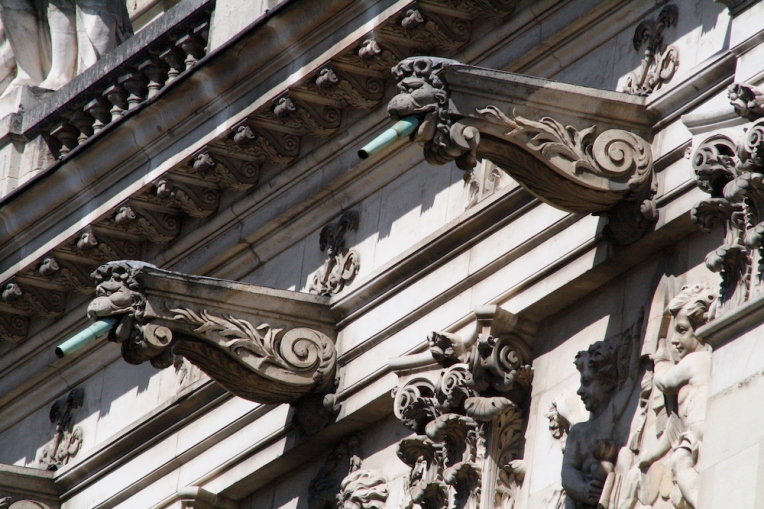
After waiting in line, to then wait in another line to actually get in, we finally made it.
Château de Versailles (Palace of Versailles)
In the photo of Brittany below, on the left is the South Wing (containing the Hall of Battles), in the center is the Central Body (containing the Hall of Mirrors), and on the right is the North Wing (containing the Royal Chapel and Royal Opera). The King’s and Queen’s chambers are also in the center section, but they’re on the First Floor (or what we would call the second floor in America).
We started our tour in the North Wing of the palace. As soon as we walked in, there was the Royal Chapel, the room where Marie Antoinette married Louis XVI on May 16, 1770.
The half-dome of the apse is decorated with Charles de la Fosse’s The Resurrection of Christ.
A better view of the chapel’s organ, which was built between 1709-1710.
Below is a photo looking down the Galerie de Pierre…
Next on our palace tour was the Salon d’Hercule (Hercules Room). The ceiling is titled Apothéose d’Hercule (Apotheosis of Hercules), which gave the room its name. On the wall is Feast in the House of Simon (Verlet, 322). Louis XIV received the painting as a diplomatic gift from the Republic of Venice in 1664. (Wikipedia)
The fireplace is this room is massive…
We left the Hercules Room and heading into the Central Body of the palace.
Almost every ceiling in the palace was painted, and each seemed to be more impressive than the last.
This is from the Venus Salon…
And this one is from the Mercury Salon…
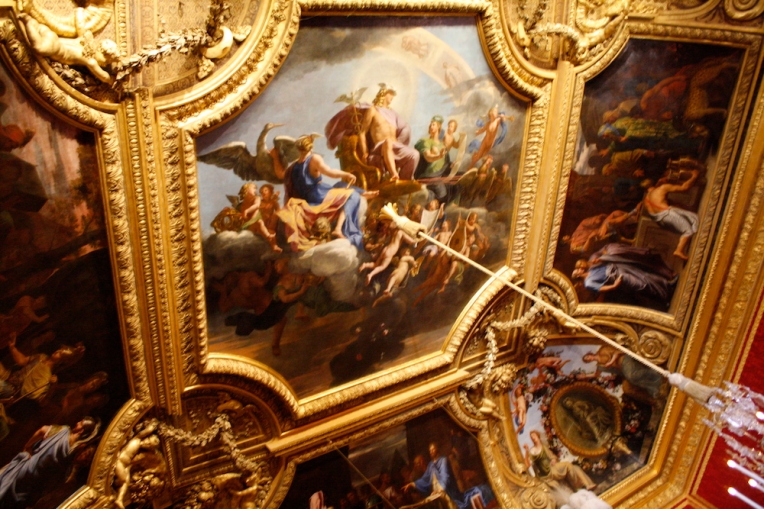
Also in the Mercury Salon is a “clock offer to Louis XIV by its maker Antoine Morand in 1706. The bed that is now at display in the Mercury salon is the one that Louis-Philippe placed there when he transformed Versailles from a royal residence to a museum.” (ThisisVersaillesMadame)
“Most spectacular of all is the Galerie des Glaces (Hall of Mirrors), a 235-foot-long drawing and ballroom lined along one side with 17 huge mirror” arches. Each arch contains twenty-one mirrors with a total complement of 357 used in the decoration of the Galerie des Glaces. “On the other side of the room, a row of windows opened onto vast gardens and the sunset.” (HowStuffWorks.com)
This room truly was magnificent. And it gave us a chance to ham up the fact that we were tourists…
In the 17th century, mirrors were among the most expensive items to possess at the time.
One thing that I really liked about the room was how the artwork of the ceiling spilled over onto the wall murals on both sides of the room.
Leaving the King’s and Queen’s chambers took us into the South Wing of the Palace.
“In the 1792 room, Louis-Philippe assembled the portraits of the heroes of the Revolution and the Empire wearing the uniforms and badges of their ranks in September 1792 when the Republic was proclaimed.” (Napoleon.org)
The Galerie de Pierre is mirrored on the South Wing. The entire hallway is devoted to statues. Like this one of Napoleon (Napoleone di Bonaparte), born August 15, 1769 and died May 5, 1821. He was a French military and political leader who rose to prominence during the French Revolution and led several successful campaigns during the Revolutionary Wars. As Napoleon I, he was Emperor of the French from 1804 until 1814, and again in 1815.” (Wikipedia)
Charlemagne, “also known as Charles I, was King of the Franks. He united most of Western Europe during the early Middle Ages and laid the foundations for modern France and Germany. He took the Frankish throne in 768 and became King of Italy from 774. From 800, he became the first Holy Roman Emperor — the first recognized emperor in Western Europe since the fall of the Western Roman Empire three centuries earlier.” (Wikipedia)
Louis XIV, whom I’ve already discussed in this blog…
Running parallel to the hall of statues, is the Galerie des Batailles (Gallery of Battles). It is a 390 ft. x 43 ft. gallery, and was intended to glorify French military history from the Battle of Tolbiac (traditionally dated 495) to the Battle of Wagram (5–6 July 1809). (Wikipedia)
The paintings in this gallery are absolutely massive.
Before leaving the palace, we walked through the apartments of Mesdames, which were what the King’s daughters were called. This is the bedroom of Madame Victorie.
Well the palace certainly had a lot to offer, so we were excited to see what lay behind it in the gardens.
Jardins du château de Versailles (Gardens of Versailles)
We were met with a pretty amazing view. The Versailles Orangerie, built between 1684 and 1686, houses several orange trees.
It offered us a pretty nice place to sit and relax for a minute.
The gardens were full of topiary, fountains, and statues. Also, there were several of these urns, and each one had unique statues on its side.
If we thought the South Wing of the gardens was impressive, then we were positively blown away by the main section of the gardens. The gardens cover almost 2000 acres of land, much of which is landscaped and named (there’s the Queen’s Grove, The Colonnade Grove, The Grove of the Arc de Triumph, etc.)
This is the Latona Fountain. Inspired by Ovid’s ‘Metamorphoses’, the Latona Fountain illustrates the legend of Latona, protecting her children Apollo and Diana….
Brittany and I with the Latona Fountain and the palace behind us…
Further north-west into the garden lies “The Apollo Fountain.” A fountain already existed here from 1636, under the reign of Louis XIII, known as the Swans Fountain. Louis XIV extended and decorated it with the impressive and celebrated group in gilded lead representing Apollo on his chariot. The work of Jean-Baptiste Tuby, from a drawing by Charles Le Brun, it is inspired by the legend of Apollo, god of the Sun and emblem of the King.” (ChateauVersailles.fr)
The gardens were open until 8:00PM, and there were a few other things at Versailles that closed earlier, so we headed off in search of those.
The Grand Trianon
The northwest corner of the property known as Versailles contains the Trianon Palaces (the Grand Trianon, the Petit Trianon, and the Queen’s Hamlet). After a really nice walk down a grassy trail, we arrived at the Grand Trianon. It was built at the request of King Louis XIV, as a retreat for the himself and his mistress of the time, the Marquise de Montespan, and as a place where he and invited guests could take light meals away from the strict étiquette of the Court. (Wikipedia)
The Music Room. Origianlly a music room for Louis XIV, Napoleon converted it into an officers’ room and Louis-Philippe converted into a billiard room. (Louis-Philippe was King of France from 1830 to 1848.) The pool table in this room is by far the largest I’ve ever seen…I want it…
The Louis-Philippe Family Room…
The Cotelle Gallery. The 24 paintings in this gallery depict the Gardens of Versailles and Trianon as they appeared when they were created in 1687.
The Petit Trianon
A bit further to the northeast we found the Petit Tianon. Built between 1762 and 1768 by the order of Louis XV for his long-term mistress, Madame de Pompadour. Madame de Pompadour died four years before its completion, and the Petit Trianon was subsequently occupied by her successor, Madame du Barry. Upon his accession to the throne in 1774, the 20-year-old Louis XVI gave the château and its surrounding park to his 19-year-old Queen Marie Antoinette for her exclusive use and enjoyment. (Wikipedia)
We actually had a bit of trouble finding the entrance to the Petit Trianon, but several others did as well, there was a general mass of people wondering around pulling on doors trying to find a way in. Instead of worrying too much about it, we started in the gardens. We followed a few paths and came to the Temple de l’Amour (Temple of Love).
This temple was built entirely out of marble and could be seen by Marie-Antoinette out of her bedroom window. Another shot of Cupid inside the temple…
We did eventually find our way inside of Marie-Antoinette’s estate. Most of the rooms consisted of furniture and decoration from her time. We took photos, but I’m not going to post them all here since they are very similar to those I’ve already shown (at least to someone who has no training in antique furniture).
There was a nice portrait of Marie-Antoinette in the billiard room…
We left the Palaces of Trianon area and walked back to the Gardens of Versailles. (Actually we got lost for a little while walking trails, but it was a beautiful day and getting lost was really nice. FYI, a huge park is connected to the gardens so it’s difficult to tell which is which.)
When we finally found our way back into the “official” gardens, we were at a huge fountain, The Neptune Fountain. It was built between 1679 and 1681, and was then called the “Pool below the Dragon.” Jacques-Ange Gabriel slightly modified the pool area and, in 1740, the sculptural decoration was installed. It is the largest fountain in Versailles.
Although the fountain is adorned with several urns and fountain sculptures, there are three primary statue groups: Neptune and Amphitrite, Proteus, and Ocean God.
Neptune and Amphitrite…
Ocean…(Narwhal sightings on our European trip: 2. Awesome.)
Proteus…
A fountain in the fountain ready to send water cascading…
And then there’s this side fountain of a cherub fighting with a demonic-looking fish…
Just a few feet away from the Neptune Fountain is The Dragon Fountain. It depicts one of the episodes of the legend of Apollo: the Python snake killed by an arrow shot by the young Apollo. The reptile is surrounded by dolphins and Cupids armed with bows and arrows riding on swans.
These fish are frightening…
Brittany sat down for a while and let me take some photos…
But I soon joined her…Fabulous…
A path right next to us led to the Grove of the Arc de Triumph. The fountain in the grove is La France Triomphante…
Leaving the grove left us back near the palace. We tried to get a panoramic shot of it…which kind of worked…
We found a café just outside of the gardens and had a light dinner. We had a beautiful view of the park that honestly felt like Seurat’s A Sunday Afternoon on the Island of La Grande Jatte.
Next we headed back into the gardens to see what else we could find. The Colonnade, build in 1685, was gated off, but we were still able to see inside. It has 32 marble columns and at its center a piece called Proserpine Ravished by Pluto.
The Chestnuts Room was redesigned in 1704, but was once lined with eighty antique statues. Now there are eight antique busts and two statues.
Of all the sculptures the Gardens of Versailles had to offer, Milon de Crotone (Milo of Croton) was my favorite. The original is now at the Louvre, but it was unveiled first at Versailles in 1683.
“Milo was a Greek athlete who was a several times champion of the Olympic and Pythian games. As an old man, he wished to test his vigor by splitting a tree trunk that he found already cleft. His hand remained caught in the stump and he was devoured by wolves. Puget replaced these animals with the nobler figure of a lion and created a composition imbued with baroque passion and drama.”
“Milo’s body is writhing in pain and his flesh appears to be shuddering under the chisel’s touch.” (Louvre.fr)
The closing time for the gardens was quickly approaching, but we did get a few last shots in before we left.
The gardens seem to be endless in this picture…
Just before the exit gates, we ran into these guys again. We had passed them earlier, but they were surrounded by people at the time, so we took this opportunity to check them out.
Amour Porté par un Sphinx (Love Carried by a Sphinx)…
A closer shot of love…
And on the other side of the steps leading to the orange grove is a cherub / sphinx combo of the same name…
Outside the palace, we got a photo in front of the Royal Fence without being surrounded by hundreds of people.
And one last shot. (Please note that the Gardens closed at 8:00PM, and we stayed as late as we could. Meaning that it was probably right at 8:00 when this photo was taken. Do you see how light it still is?!?)
So Versailles is beautiful. No doubt about that. On Day 5 we finally took a trip inside the Louvre Museum…will that compare to our day in Versailles. It better because Day 5 is our One Year Anniversary! Check it out…Day 5…same Bat-time, same Bat-channel…

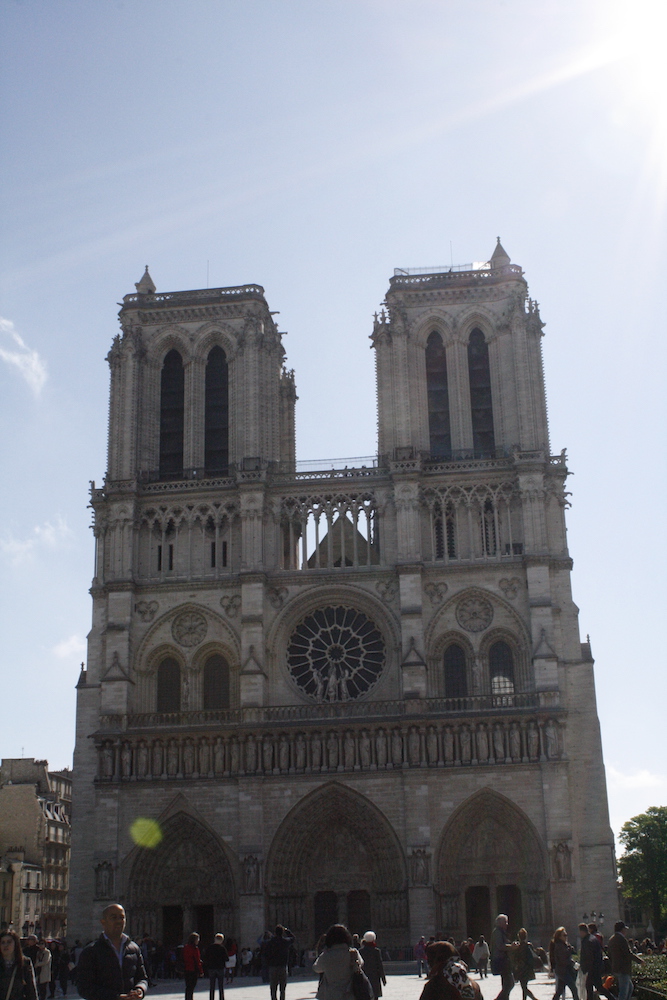
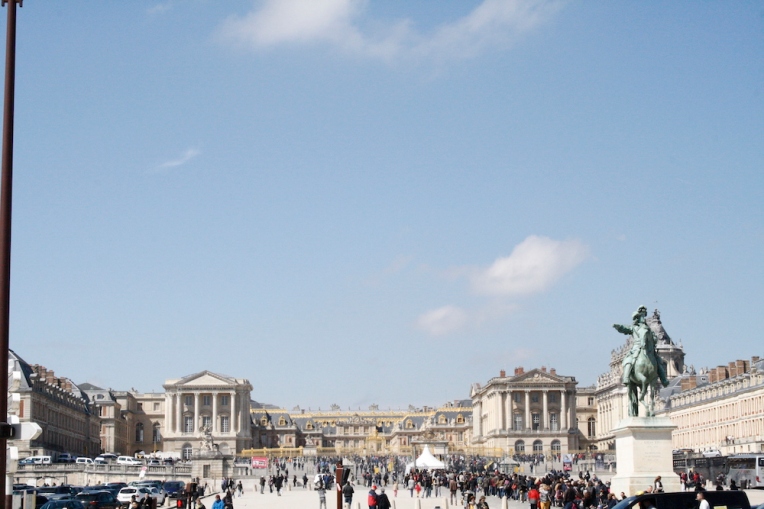
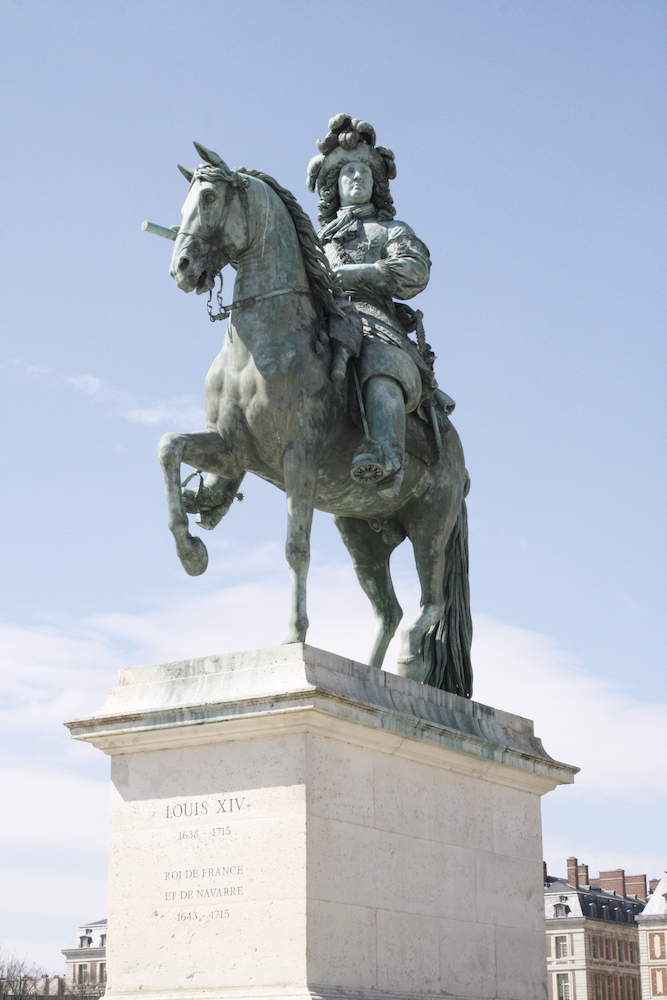
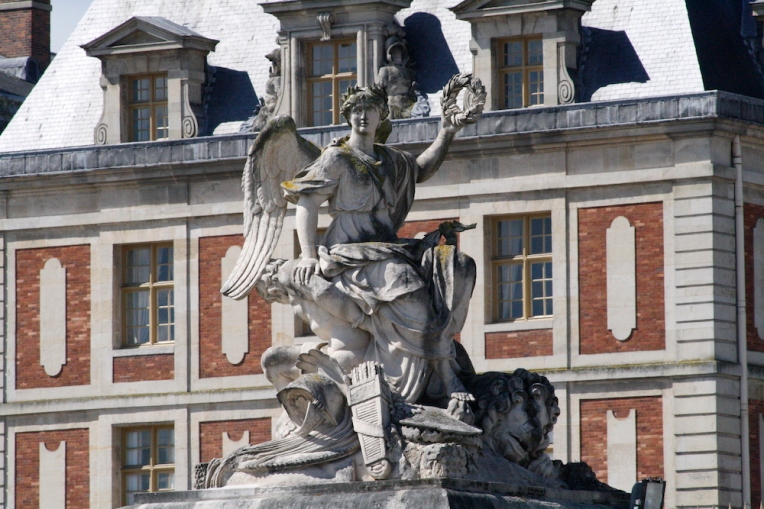


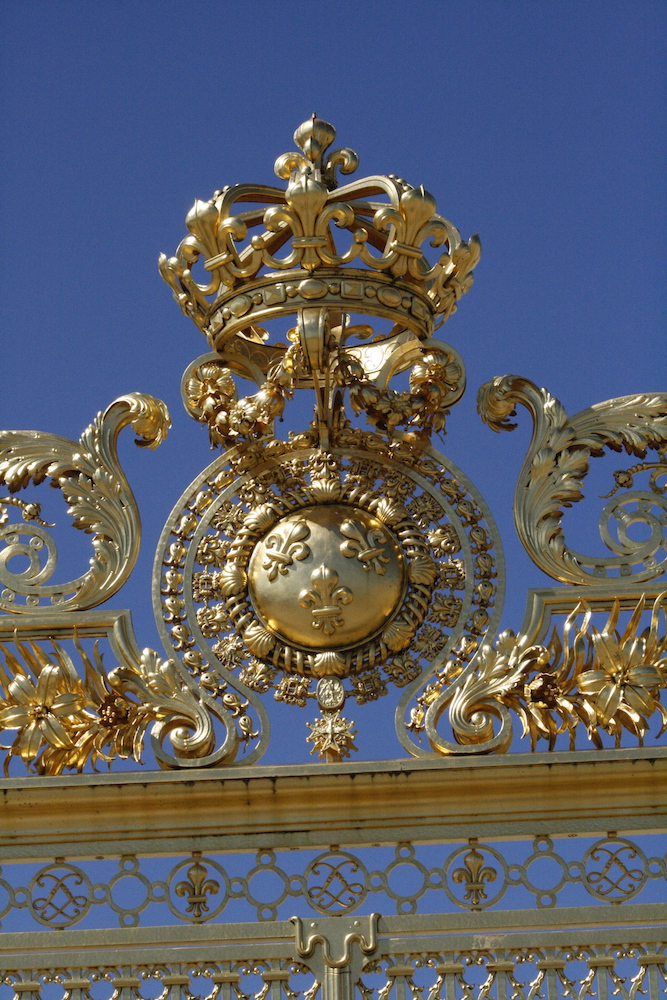
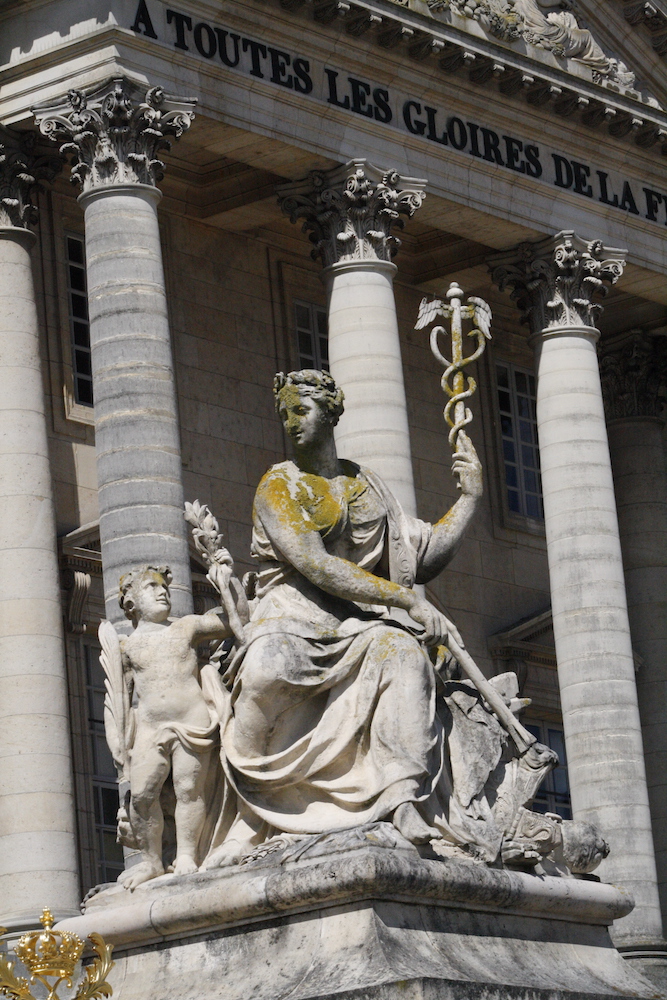
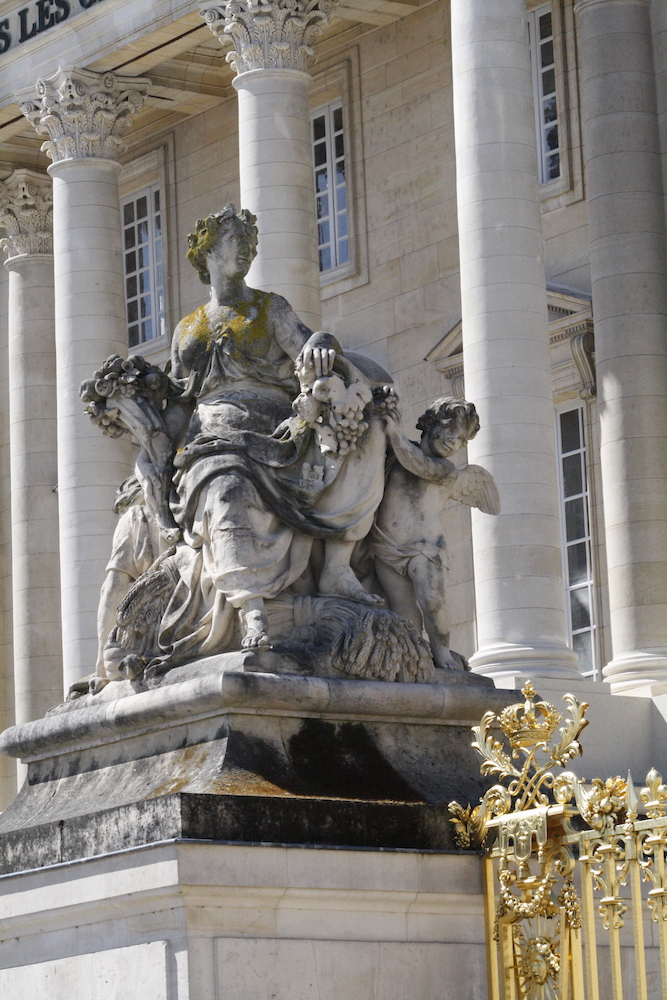
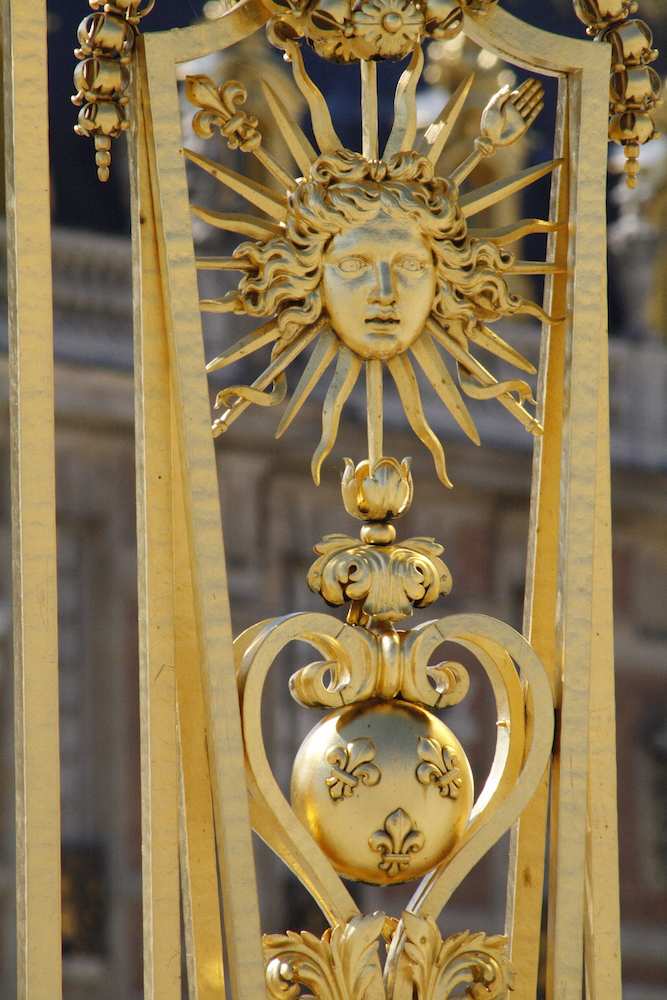


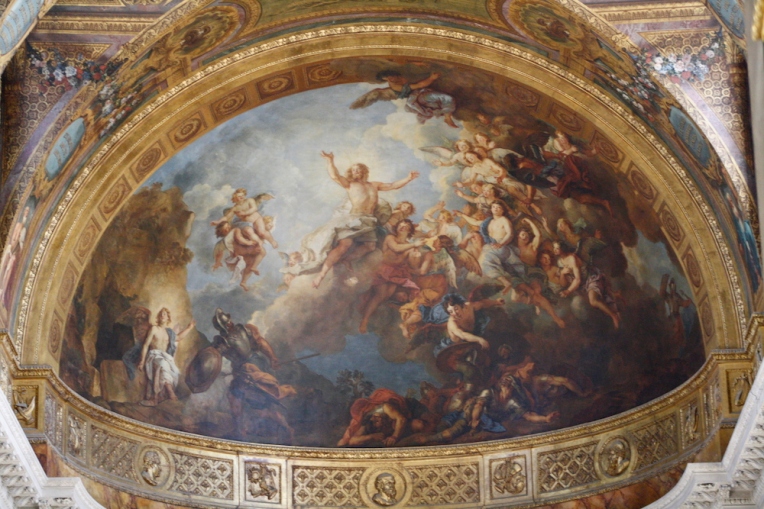





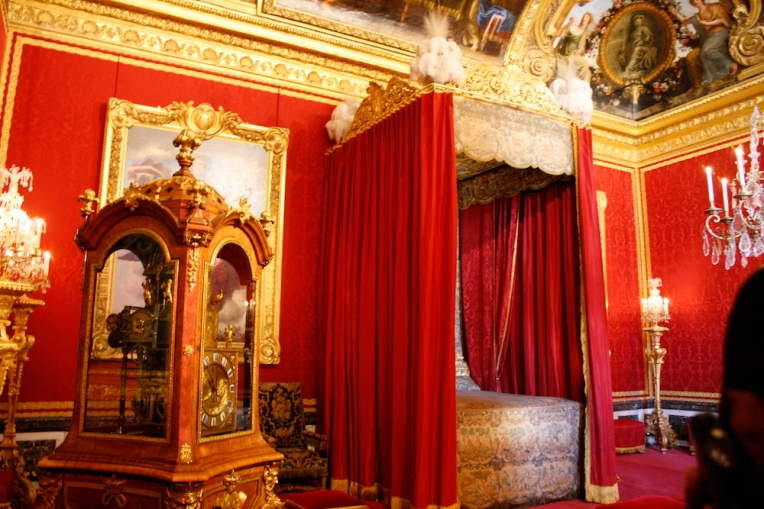
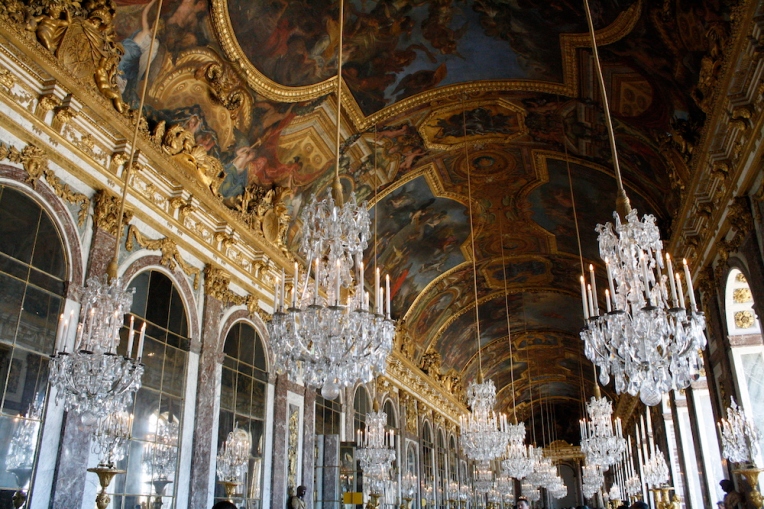

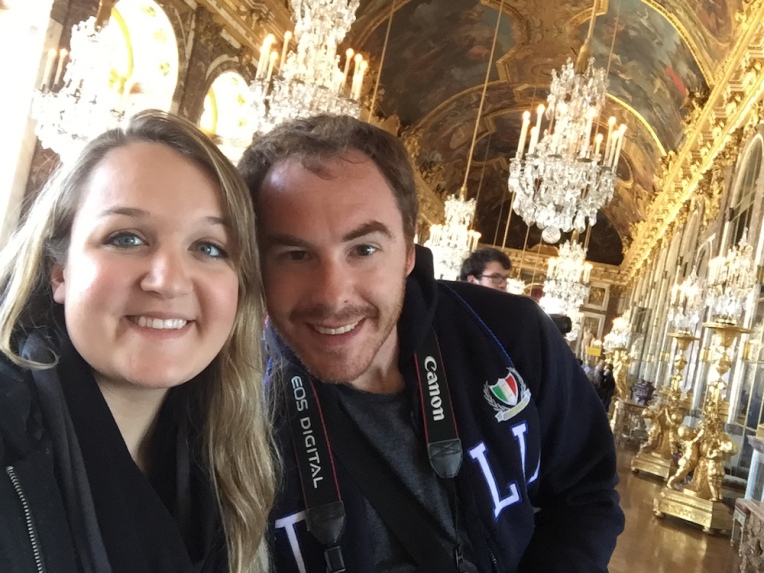
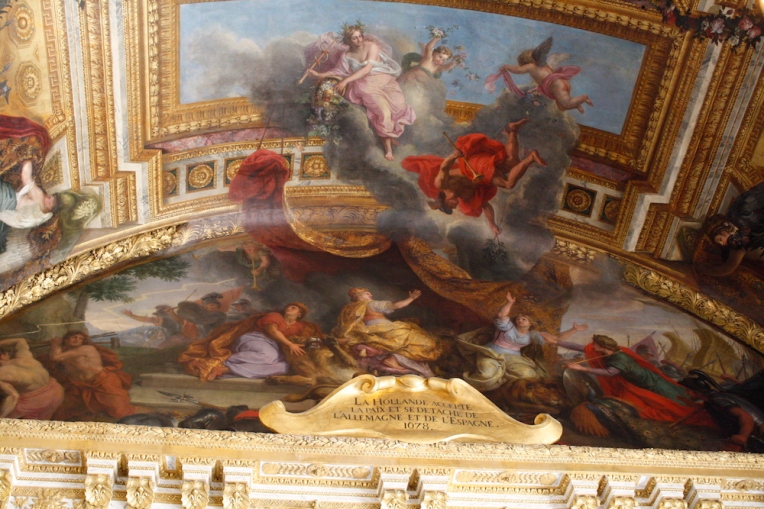



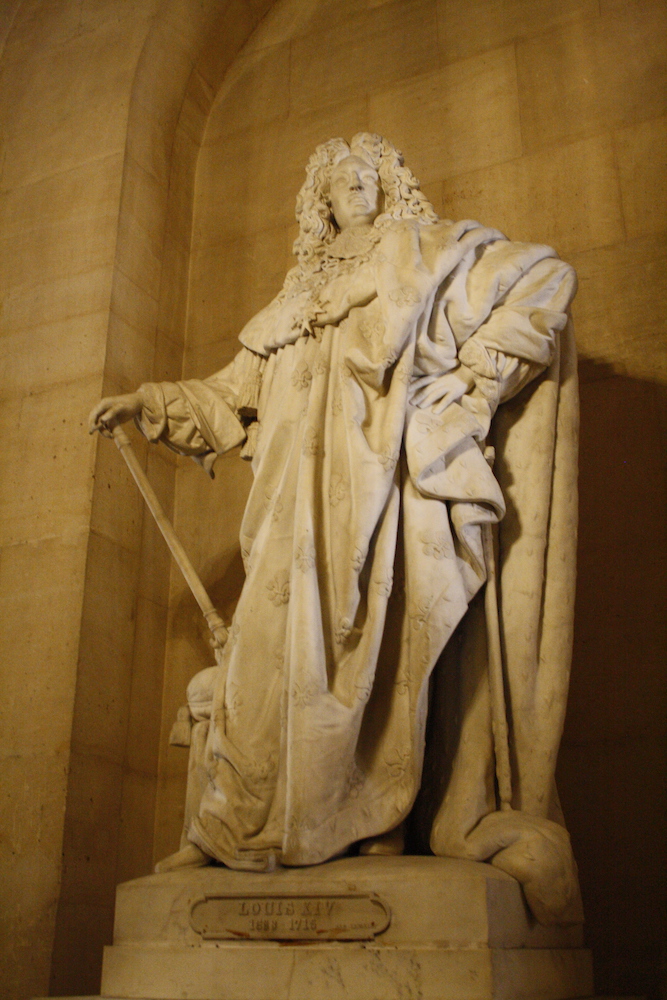
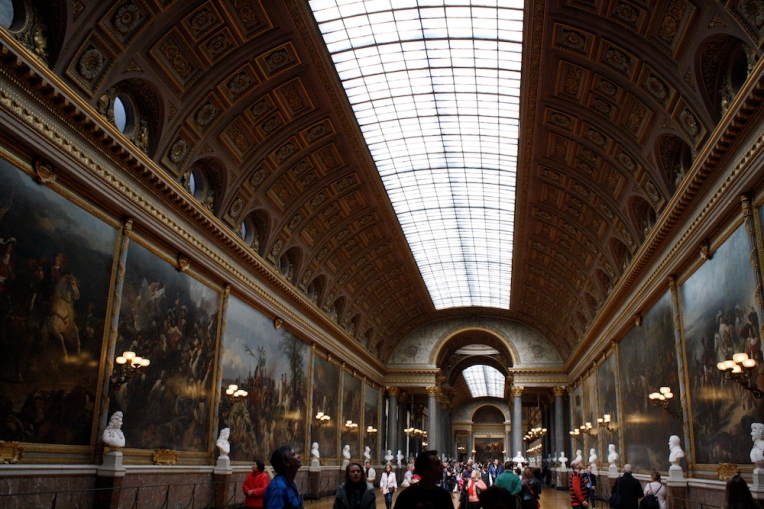
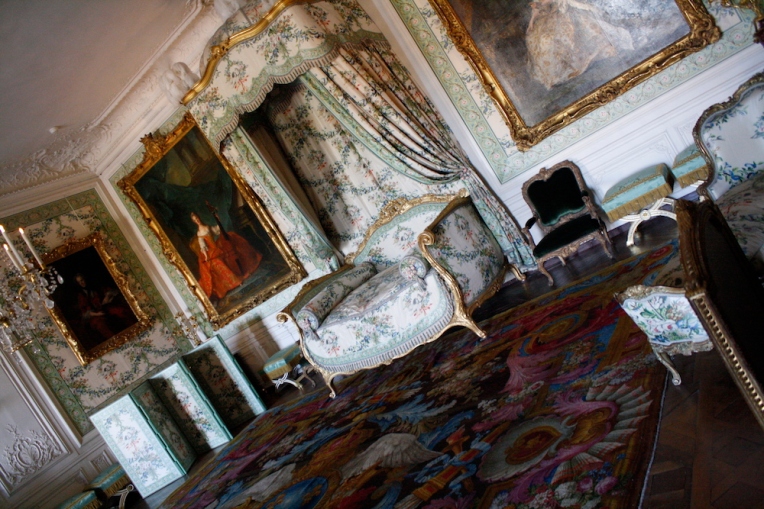
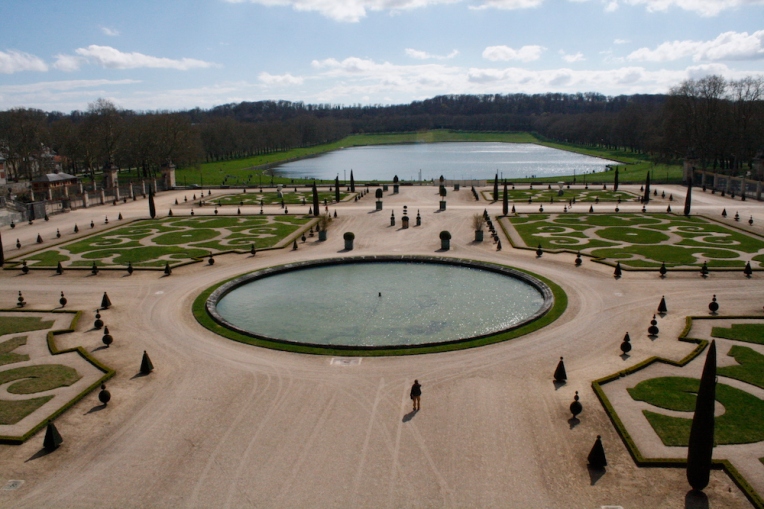

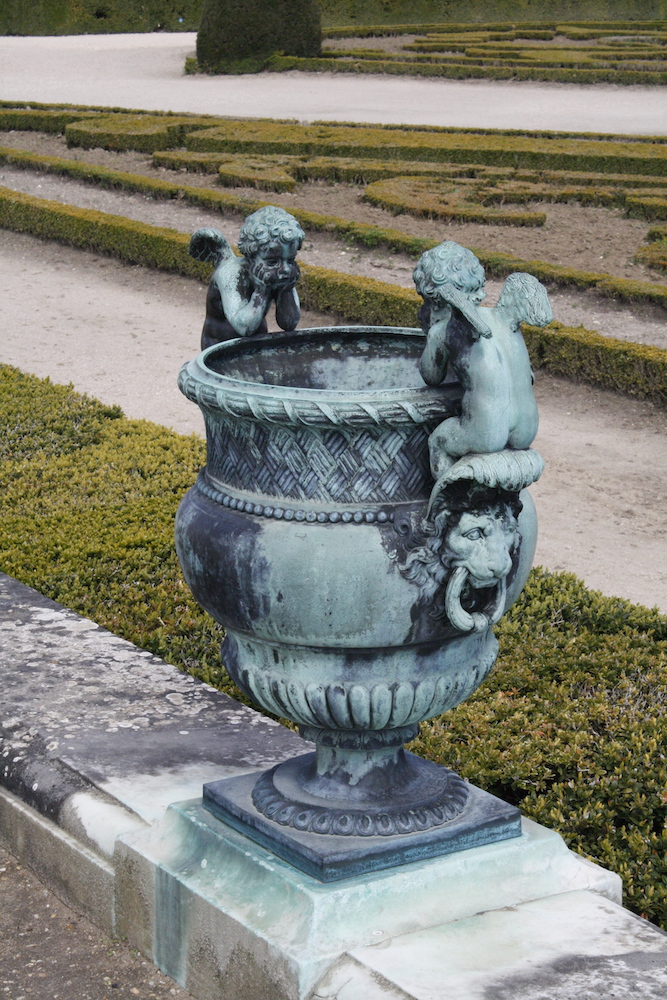
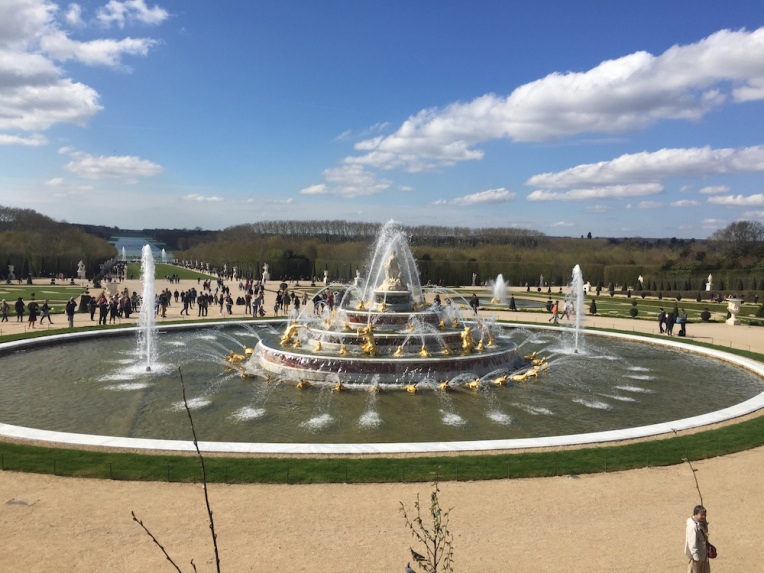

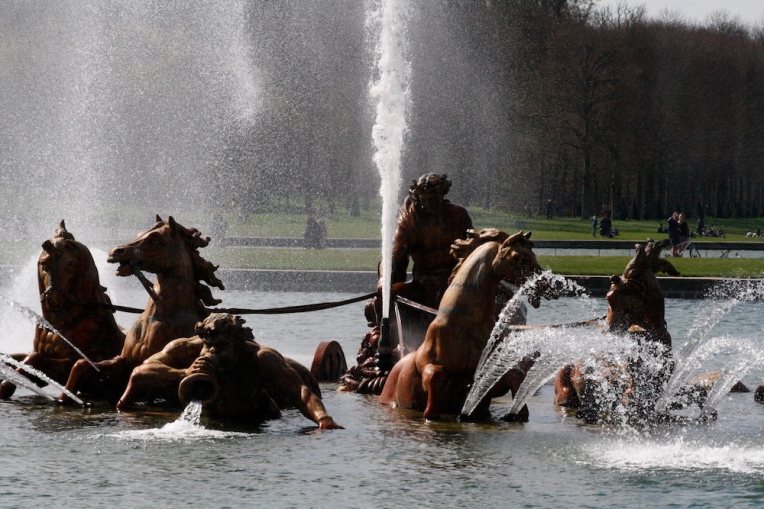
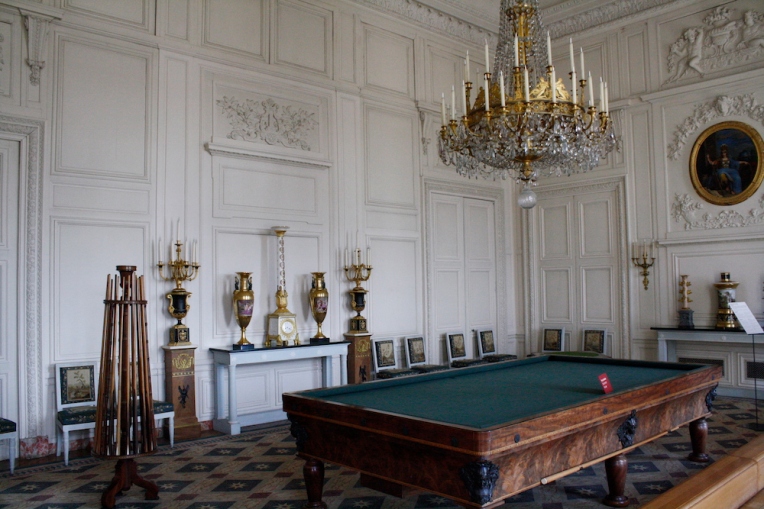


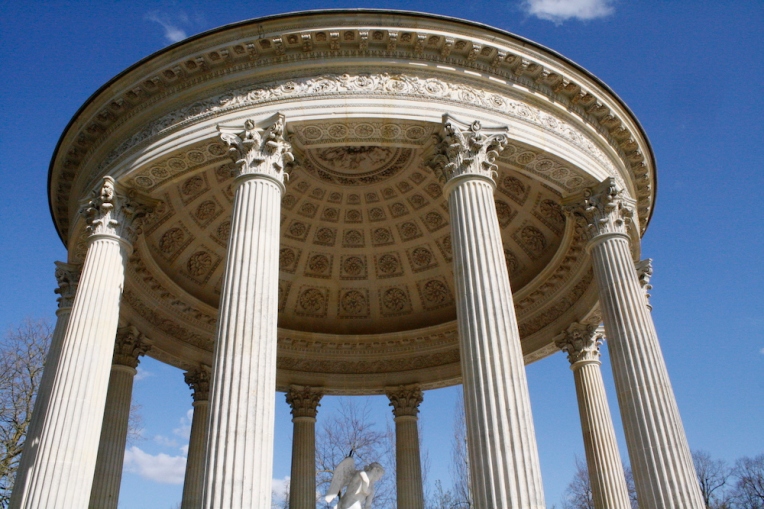


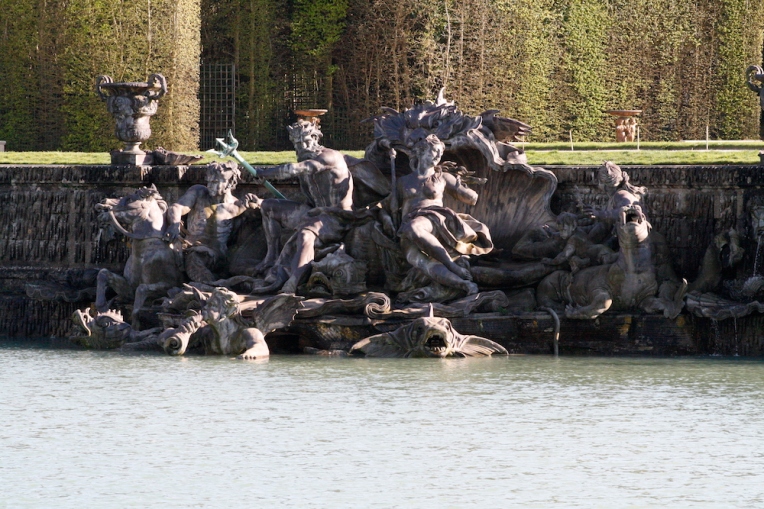
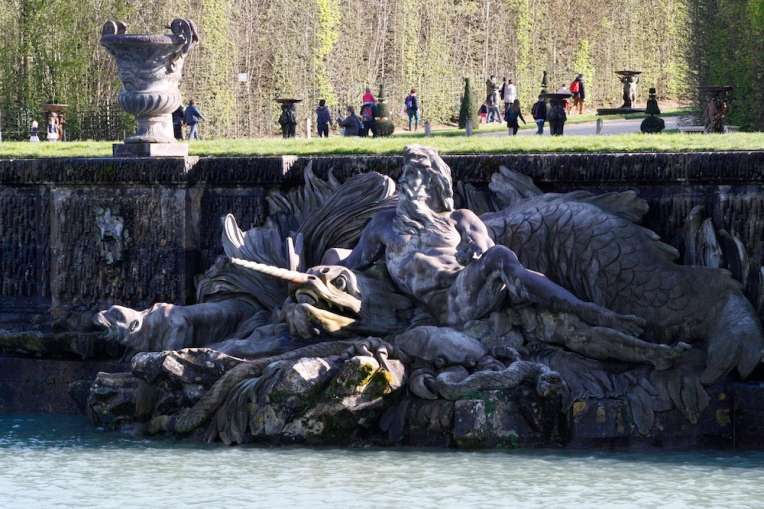

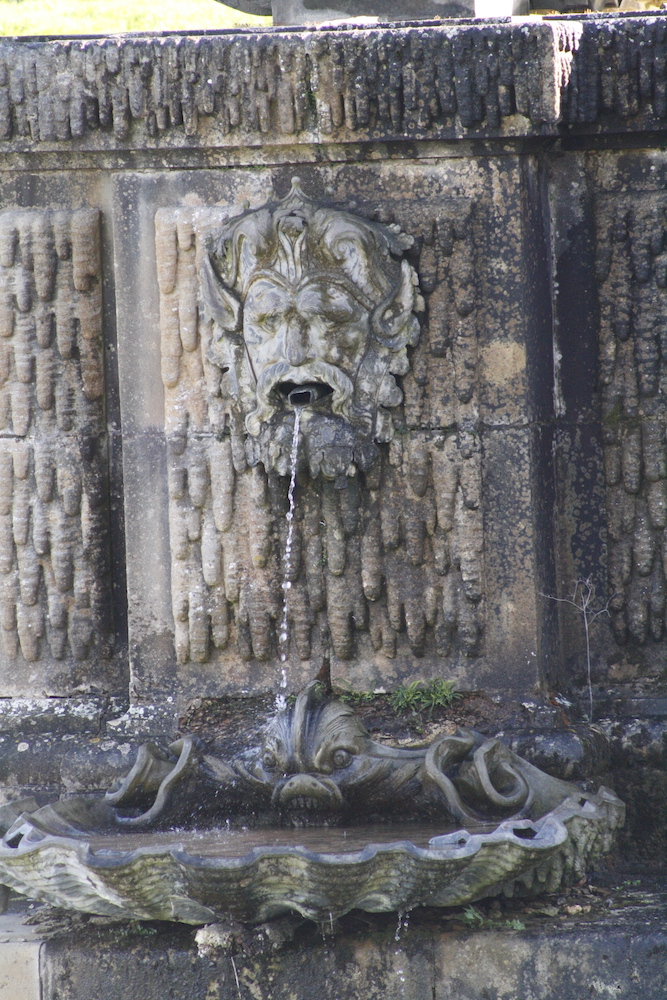
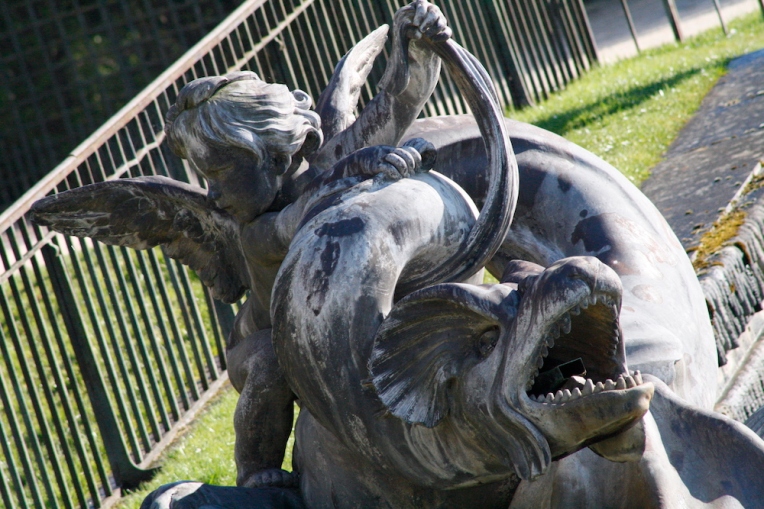

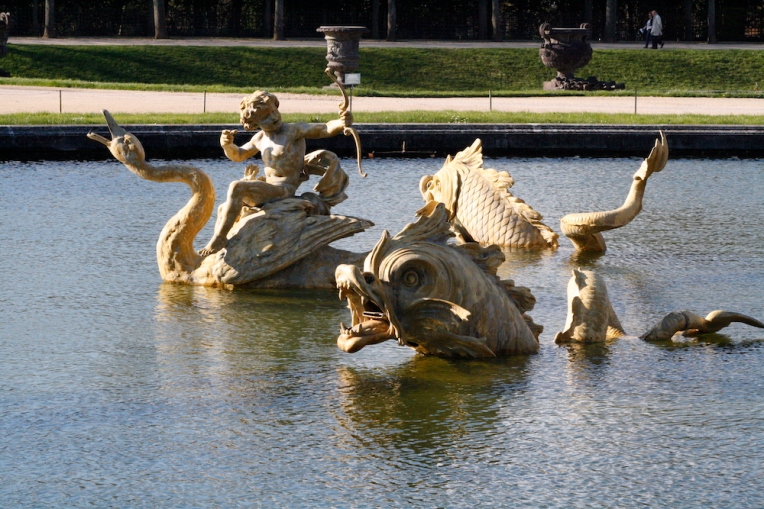
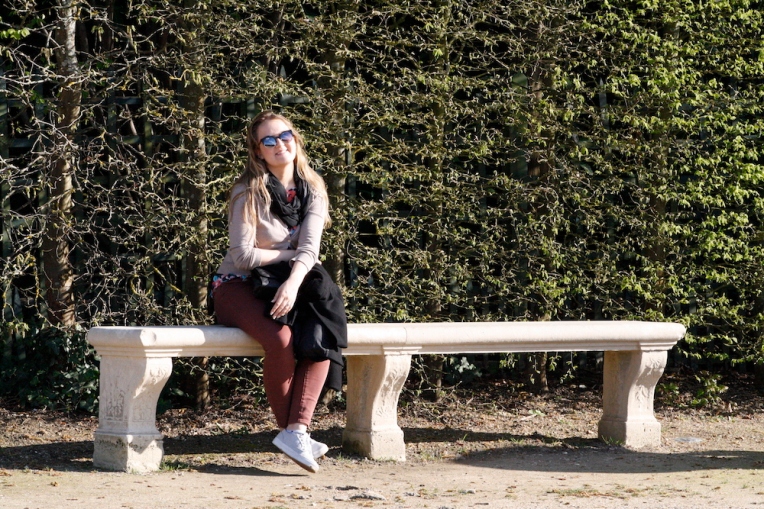
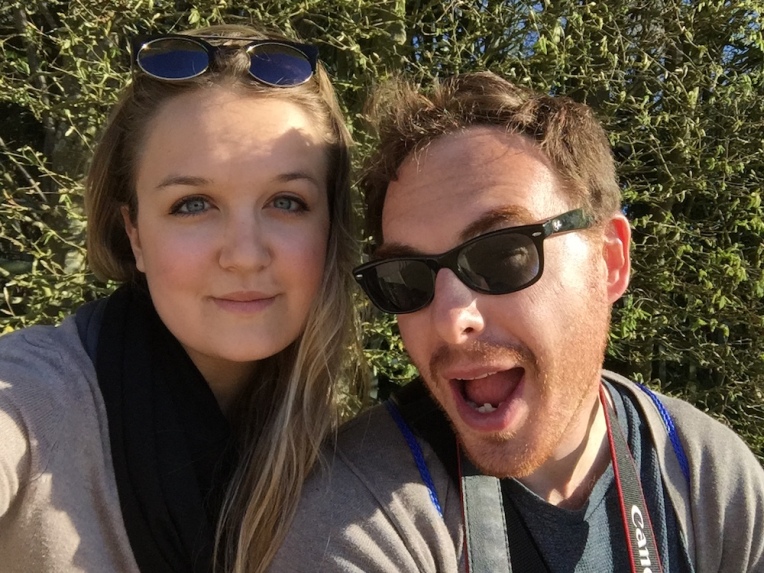




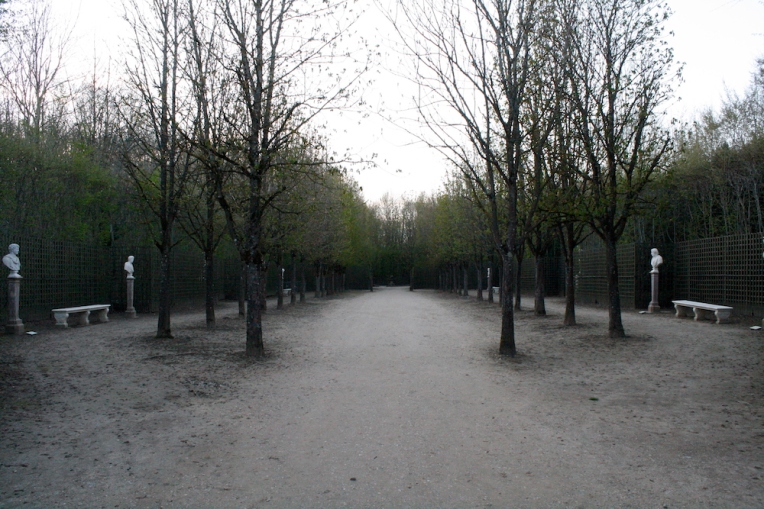


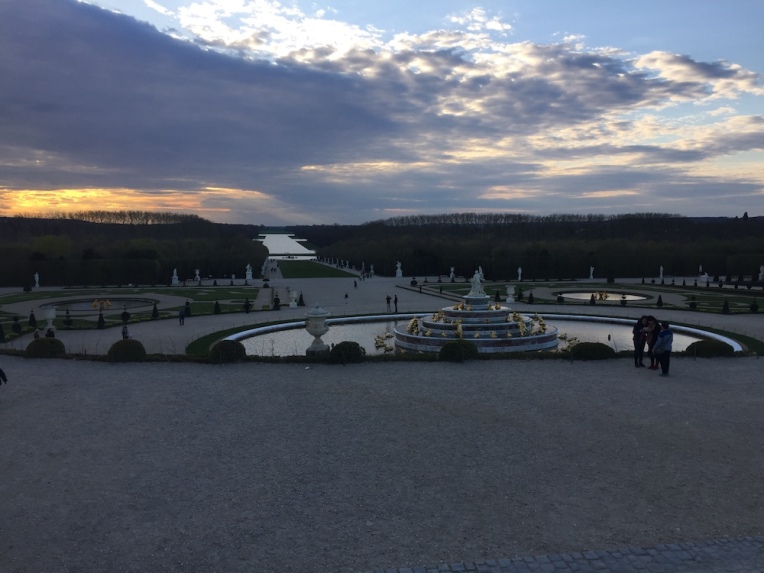
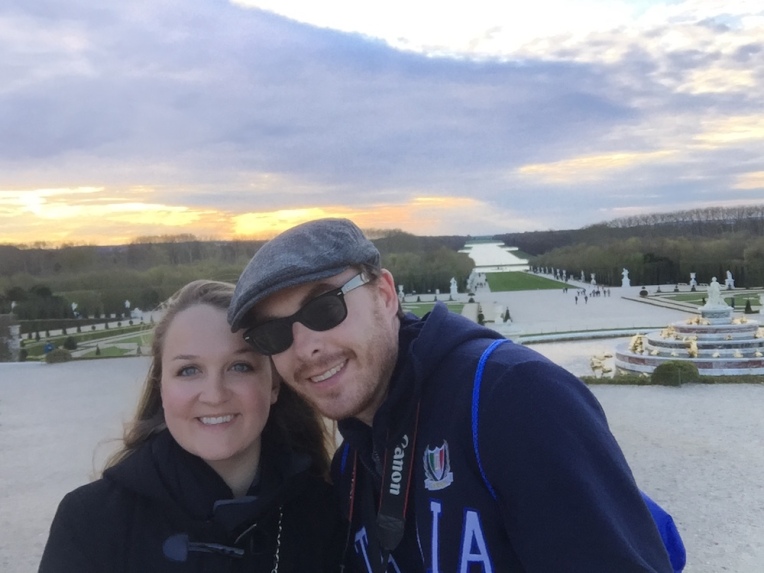
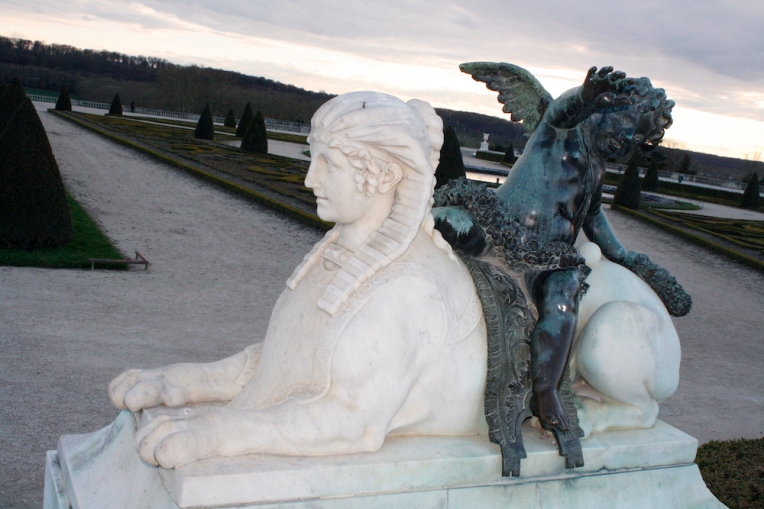
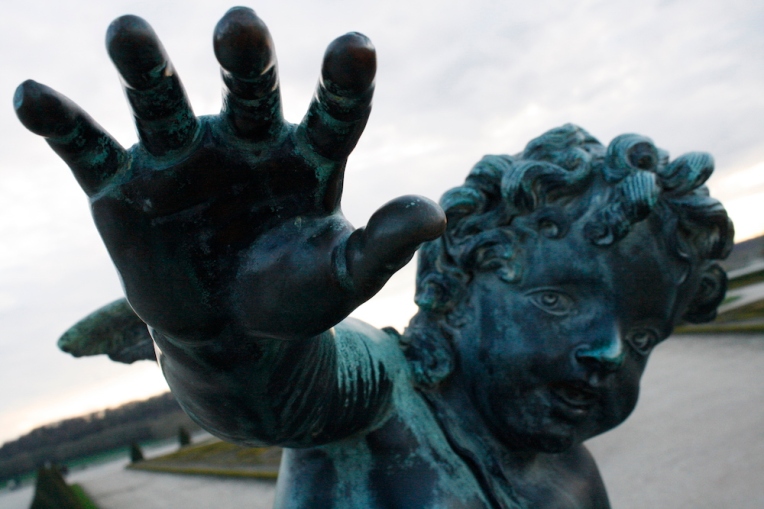
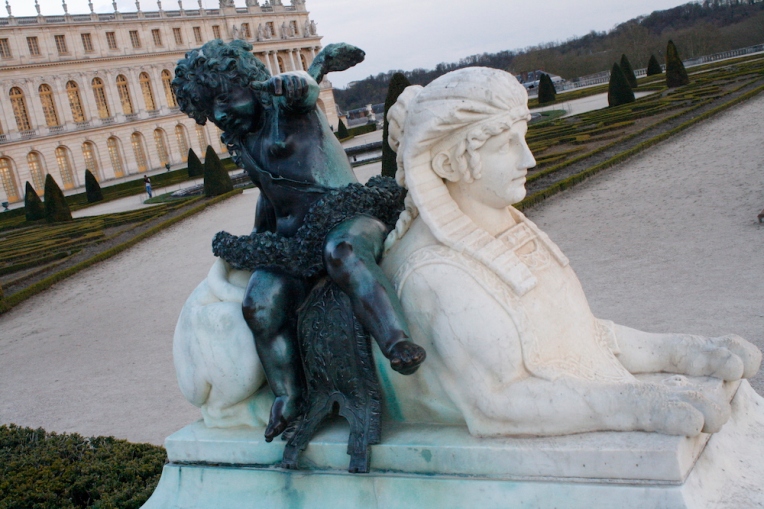
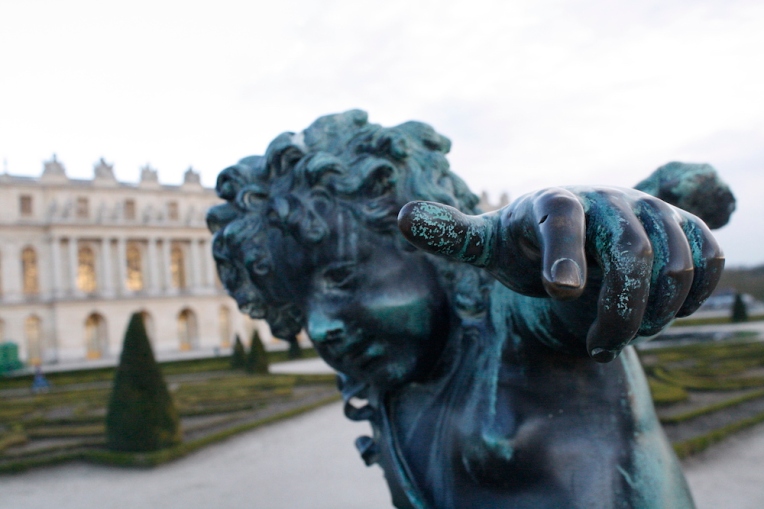

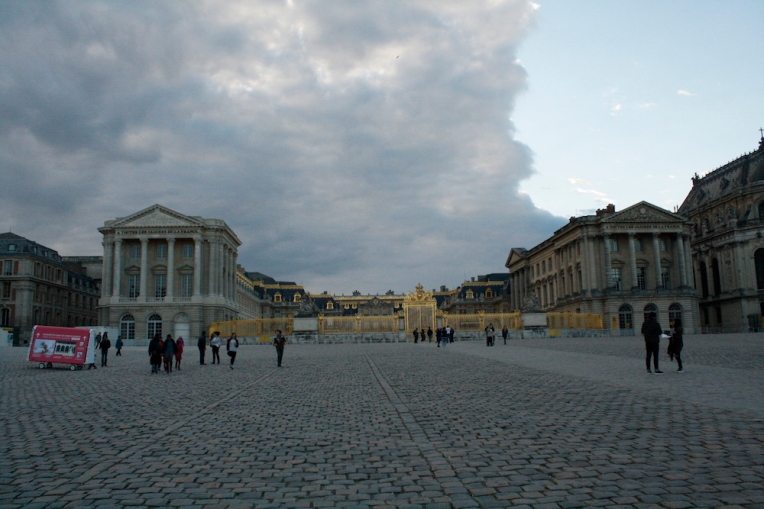
2 thoughts on “Paris – Day 11 – Versailles”